Blog Posts Tagged Technical Content
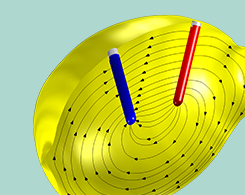
Approaching an Electrochemical Model from Scratch: Lemon Battery
The lemon battery: A high school chemistry experiment, and a great example when learning the general process for how to set up electrochemistry and battery models from scratch.
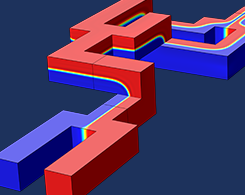
How to Create an App with CAD Import and Selections
What if you want to create an app with CAD import functionality and interactive selections, but you don’t know any programming? The Form Editor in the Application Builder lets you do just that.
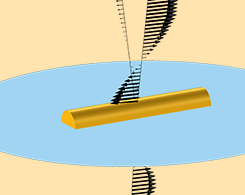
Modeling the Scattering of Light Off of an Object on a Substrate
A common modeling scenario in wave electromagnetics: computing the scattering of light off of a structure patterned on top of a uniform dielectric substrate.
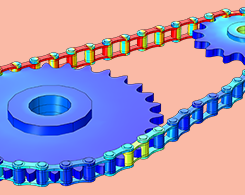
How to Model a Chain Drive in COMSOL Multiphysics®
You’ve already learned how to use built-in geometry parts to model roller chain sprocket assemblies. Now, learn how to use the geometry as an input to automatically generate a chain drive model.
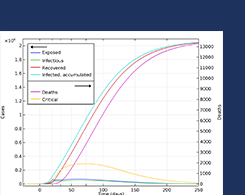
Modeling the Spread of COVID-19 with COMSOL Multiphysics®
From susceptible to exposed and infected to recovered: See how numerical modeling can help us understand the dynamics of the COVID-19 pandemic and how it spreads.
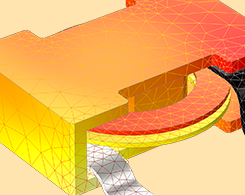
How Do I Use Gauge Fixing in COMSOL Multiphysics®?
Here’s your guide to using gauge fixing in your electromagnetics simulations in COMSOL Multiphysics®, from determining if it is necessary to imposing current conservation.
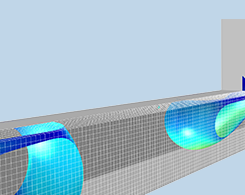
Modeling and Simulation of Multiphase Flow in COMSOL®: Part 1
Multiphase flow can be modeled on scales ranging from fractions of microns to tens of meters. Get an overview of the dispersed and separated multiphase flow models for different types of flow.
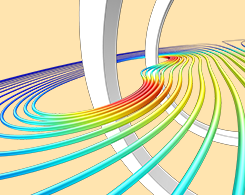
What Is Gauge Fixing? A Theoretical Introduction
Investigate the consequences of Helmholtz’s theorem when applied to Maxwell’s equations, and when using scalar and vector potentials to represent physical fields.
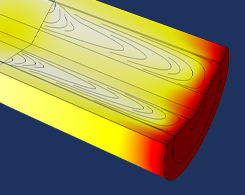
Strategies to Counter Small Automatic Time Steps
When solving a model, you may encounter a varying time step and discretization order, or NLfail or Tfail could be greater than 0. Use these strategies to improve the efficiency of the simulation.
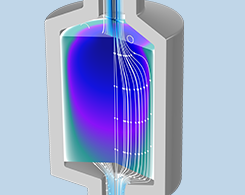
Thermal Equilibrium and Nonequilibrium Heat Transfer in Porous Media
Heat transfer in porous media can occur under thermal equilibrium, such as a rock consisting of different minerals or trapped fluids, or nonequilibrium, like a thermal energy storage (TES) unit.
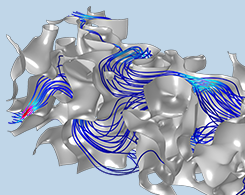
Modeling Darcian and Non-Darcian Flow in Porous Media
Get an introduction to the theory behind modeling flow in porous media, including the Kozeny–Carman, Forchheimer, Ergun, Burke–Plummer, and Navier–Stokes equations.
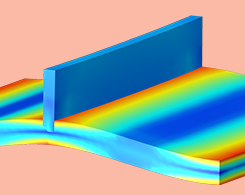
How to Predict the Fatigue Life of Welds
After an introduction to the welding process and weld geometries, we compare the nominal stress method, notch stress method, and hot spot stress methods for predicting the fatigue life of welds.
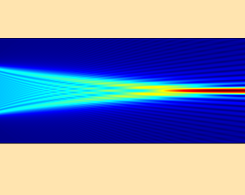
How to Perform Lens Simulations Using the Wave Optics Module
Lens simulations in wave optics can be difficult to perform, as they usually require a lot of mesh elements. Learn how to sidestep this issue using the functionality of the Wave Optics Module.
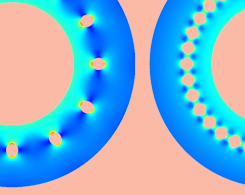
Making Structures Stronger by Removing Material
To make a structure stronger, sometimes you have to take material away instead of adding more. We go over concepts like fillets, load paths, and displacement control to demonstrate this concept.
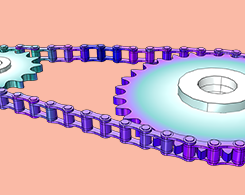
Building Roller Chain Geometries in the Multibody Dynamics Module
You can easily set up a geometry model of a roller chain, sprocket, or roller chain sprocket assembly using the built-in parametric geometry parts in the COMSOL Multiphysics Part Library.
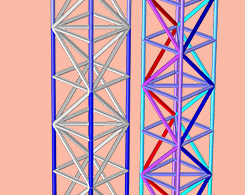
How to Perform a Sensitivity Analysis in COMSOL Multiphysics®
How do the parameters of your design affect its performance? Understanding this relationship is a valuable part of the design process. By performing a sensitivity analysis, you can do just that.

How to Use Topology Optimization Results as Model Geometries
Oftentimes, topology optimization is not the last step in your design process. In fact, you can use the results from a topology optimization study as model geometries for your next analysis.
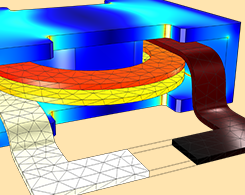
Which Study Type Should I Use for My Electrothermal Analysis?
What’s the best interface to use when implementing electrothermal analyses in COMSOL Multiphysics? We go over the interfaces, study types, and multiphysics couplings for high and low frequencies.
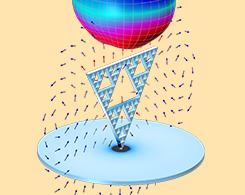
What Is the Curl Element (and Why Is It Used)?
When solving some electromagnetics problems, the curl element (also called the edge element or vector element) can be used in the finite element method.
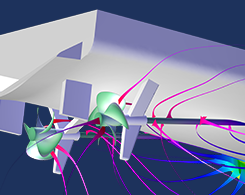
How to Simulate Impressed Current Cathodic Protection
2 common methods for protecting metal structures against galvanic corrosion are sacrificial anode cathodic protection (SACP) and impressed current cathodic protection (ICCP).

Using Web Browser Translation Tools for COMSOL Documentation
COMSOL documentation includes a lot of helpful information. Most web browsers include an automatic translation tool that enables you to read the documentation in the language of your choice.
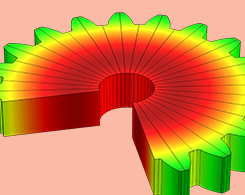
Introducing the Metal Processing Module
The Metal Processing Module includes 2 interfaces for analyzing diffusive and displacive metallurgical phase transformations: Metal Phase Transformation and Austenite Decomposition.
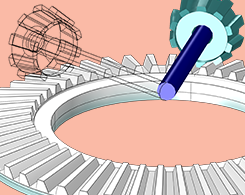
How to Automate the Setup of Your Multibody System Models
The Automated Model Setup functionality includes 2 features that will speed up your modeling process for multibody systems: Create Rigid Domains and Create Gears.
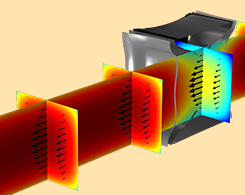
Three Semiconductor Device Models Using the Density-Gradient Theory
You can use the density-gradient theory to model semiconductor devices. Here are 3 examples: a Si inversion layer, Si nanowire MOSFET, and InSb p-channel FET.
